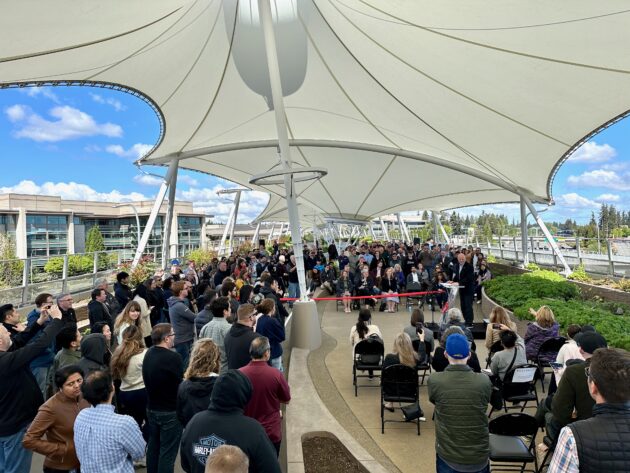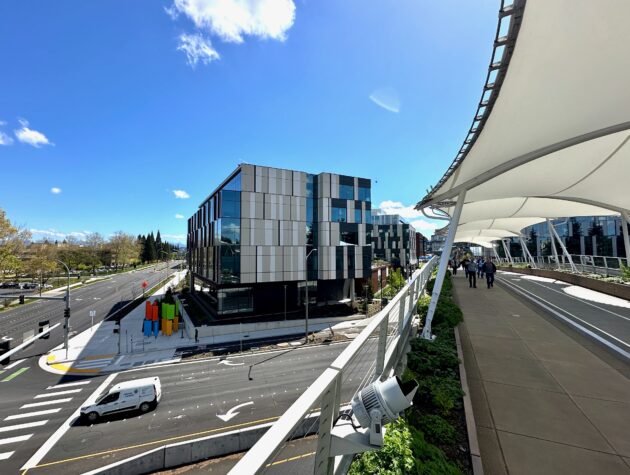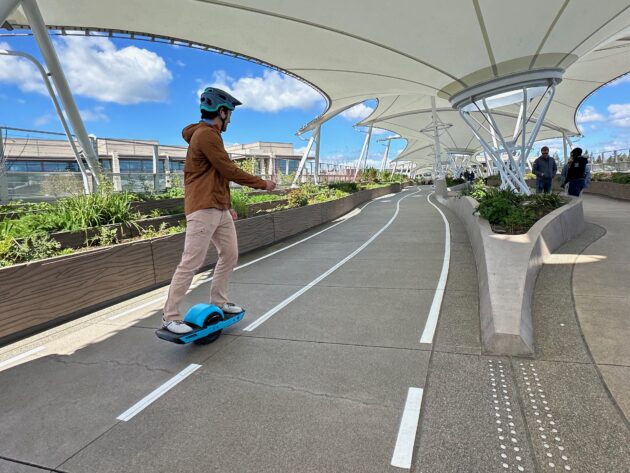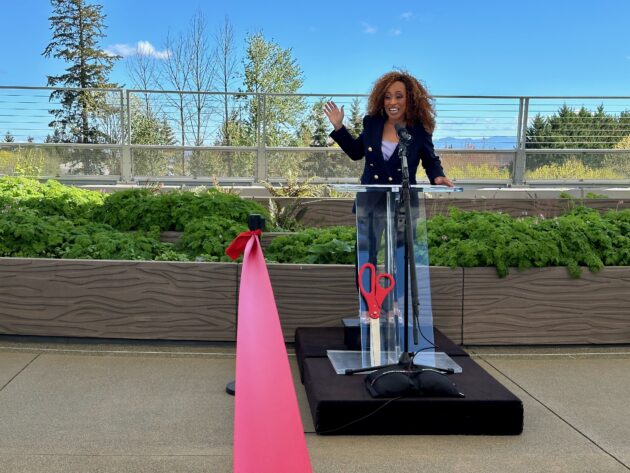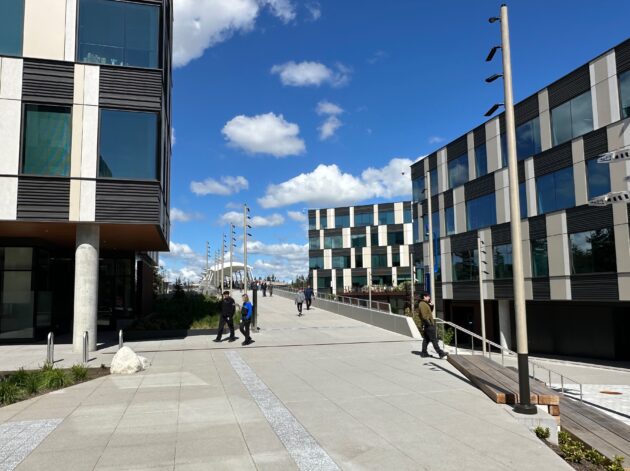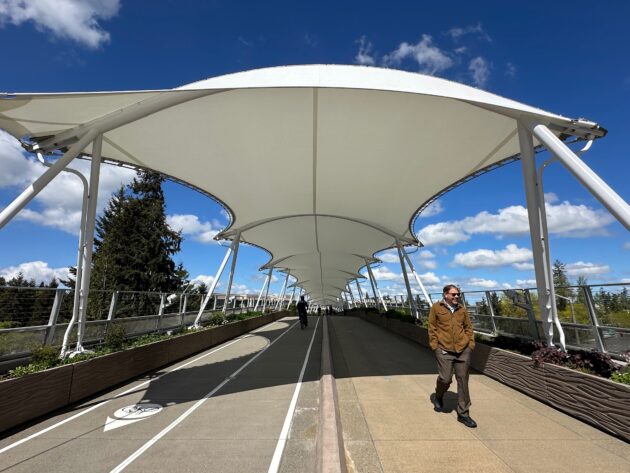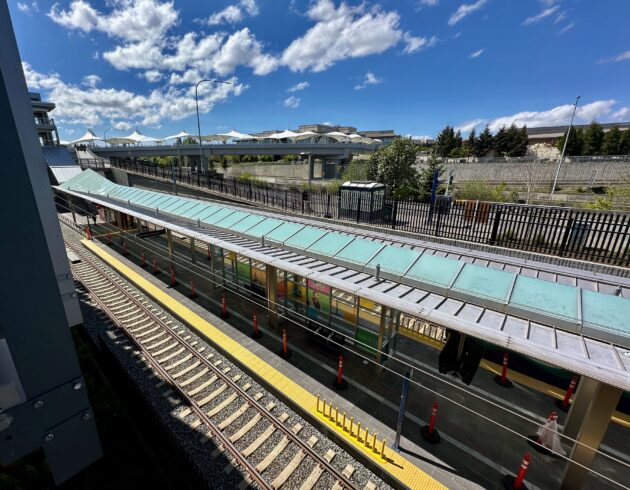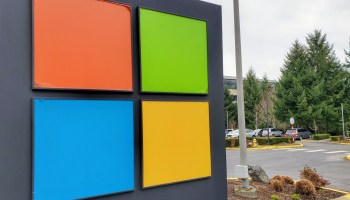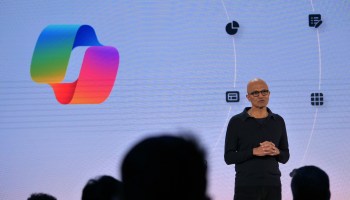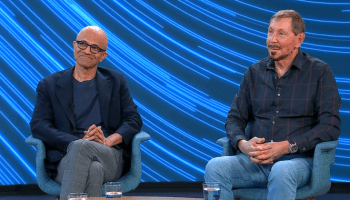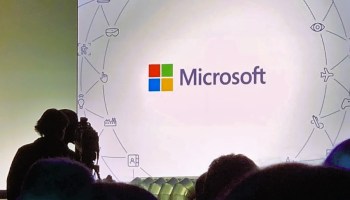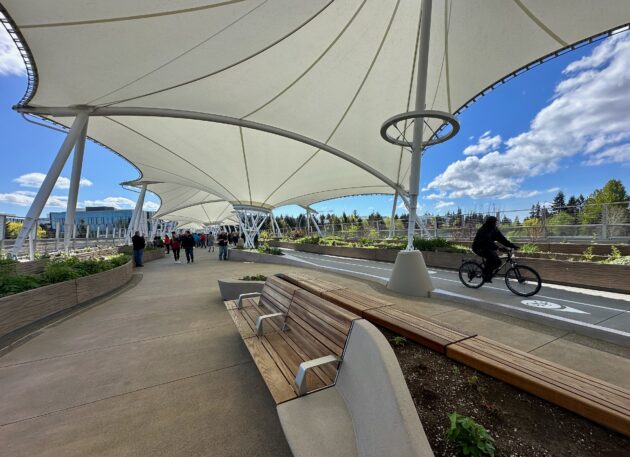
People on foot, riding bicycles, and even those cruising on electric skateboards crisscrossed over a busy highway between Microsoft’s old and new campuses on Monday as a dramatic new pedestrian bridge officially opened in Redmond, Wash.
The Redmond Technology Station Bridge, an 1,100-foot span that crosses more than 20 lanes of roadway beneath — and two sets of light rail track — is being ushered in as a greener, safer way to move the tech giant’s employees and other commuters and community members around what’s hoped will be a bustling Sound Transit station.
Under a series of large, interconnecting, white canopies that run the length of the bridge over SR 520, officials from Microsoft, the City of Redmond, King County and Sound Transit welcomed those who made the bridge a reality and those who will use it.
“We are very happy to offer this, to see this new way of traveling for our employees,” said Barb Wilson, a public affairs representative for Microsoft. “I think it’s going to be an immediate impact.”
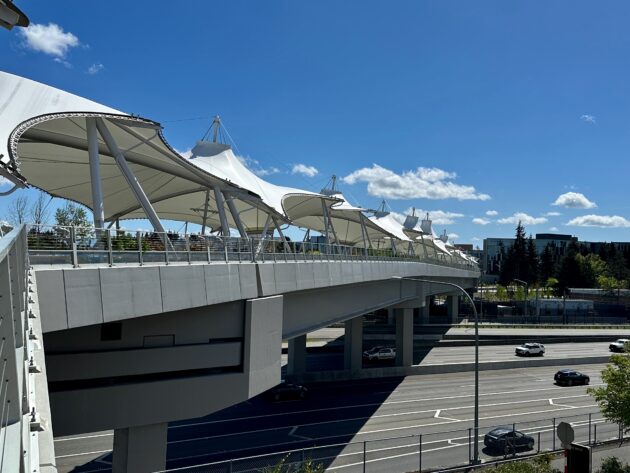
Making it easier to get to work might be viewed as a way to lure more remote or hybrid workers back to the office more regularly. Or perhaps the bridge acts as a recruitment tool for Microsoft, leveraging whatever it can in the competition for regional tech talent.
“We have employees all over the region,” Wilson said. “For people to be able to hop on light rail, ride their bike, or be able to get the commuter bus or Metro buses, there’s all kinds of amenities, not just for our employees but also for their families, for the community.”
A large red ribbon was cut to officially open the span, and soon the bridge was carrying Microsoft workers gawking at the structure, taking selfies, or simply using it to increase their lunch options between the west and east campuses.
Microsoft paid for construction of the bridge, which features a wide walking path, two lanes for bicycles, benches, and native Northwest plantings along both sides. The bridge was designed by AECOM and engineered by Kiewit Engineering Group. The canopy structure was designed and engineered by FTL Design Engineering Studio (now part of TYLin). Microsoft is partnering with the City of Redmond to maintain it.
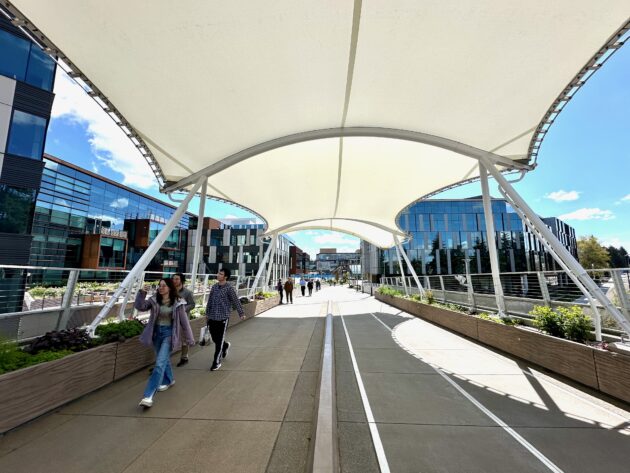
This bridge connects to Sound Transit’s new Redmond Technology light rail station, the SR 520 transit “flyer” stop, a regional bike trail, and Microsoft’s campus, which is undergoing a major refresh that highlights pedestrian and bike friendly amenities and accessibility for 47,000 employees.
The opening of the bridge is timed to the official opening celebration this Saturday of the light rail station, the last of eight stations on 6 1/2 miles of rail that make up the 2 Line between Bellevue and Redmond. The plan is to eventually connect the line to Seattle when light rail eventually starts running across Lake Washington on I-90.
Redmond Mayor Angela Birney, King County Executive and Sound Transit Board Chair Dow Constantine, King County Councilmember Claudia Balducci, and Sound Transit Interim CEO Goran Sparrman all praised the collaboration between Microsoft and various partners, including local government agencies and the Washington State Department of Transportation.
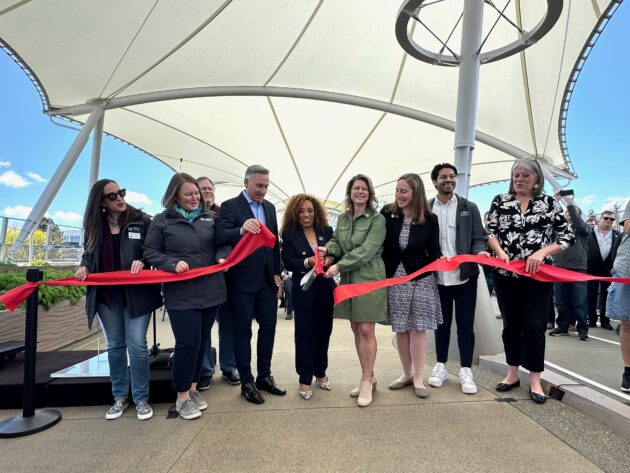
“Today’s grand opening is an important milestone in the effort to create a multimodal transportation system that supports the region’s economy and quality of life,” said Alice Jolla, chief accounting officer and corporate vice president at Microsoft. “This bridge is a symbol of Microsoft’s commitment to our local community.”
As traffic zipped beneath on a highway known to back up during busier rush hour traffic, the bridge felt like a floating respite for workers making the easy 2-minute walk from one side to the other.
Ron James, a security guard with Securitas, which patrols the Microsoft campus, was waiting with his bike for the bridge to open. He rides about 60 hours per week, and the bridge will improve many of his movements.
“We have an ops 2.0 over here,” he said pointing to the new east campus. “But our original ops building is over there,” he said, pointing at older buildings to the west. “We can get back and forth between the two a lot more. We could help answer different calls if we’re short on responders that day because this thing just bridged that gap.”
Keep scrolling for more images from Monday’s opening event:
